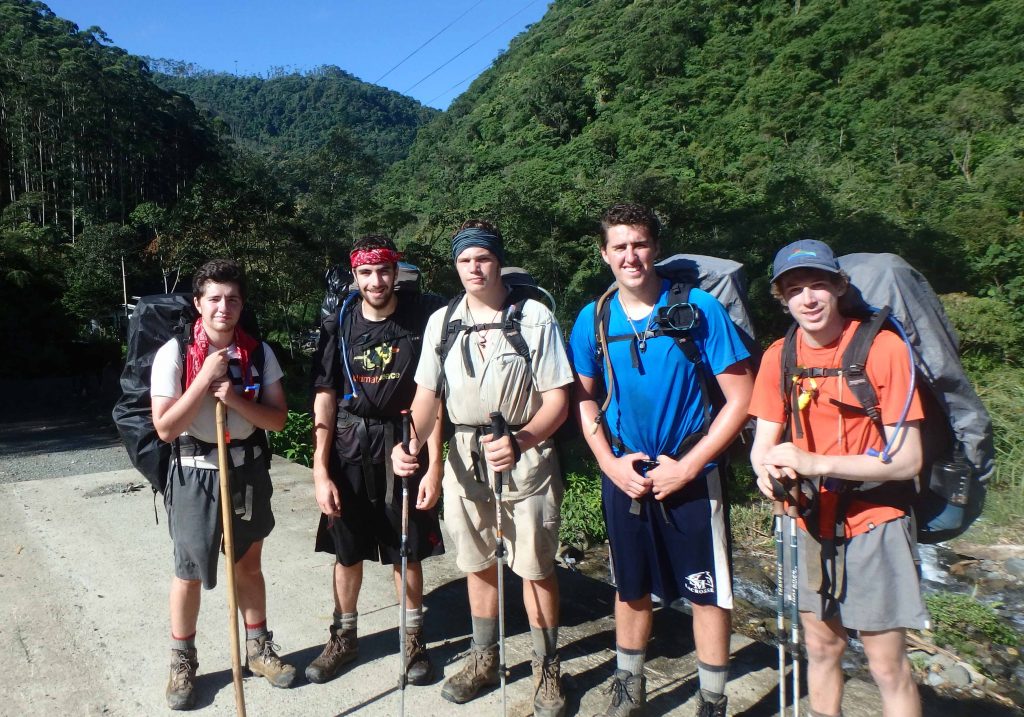
We are excited to share that our
Coast to Coast Expedition Semester students recently completed their 26 day hike, trekking across the country of Costa Rica from the Atlantic to Pacific Coast. We are so proud of our students for completing such a physically and mentally challenging feat!
“Obviously it felt long,” said
Josh N. from Cambridge, Massachussets. “There were long days and there were short days, but the biggest thing I learned is that I can push through things I didn’t think I could do.”
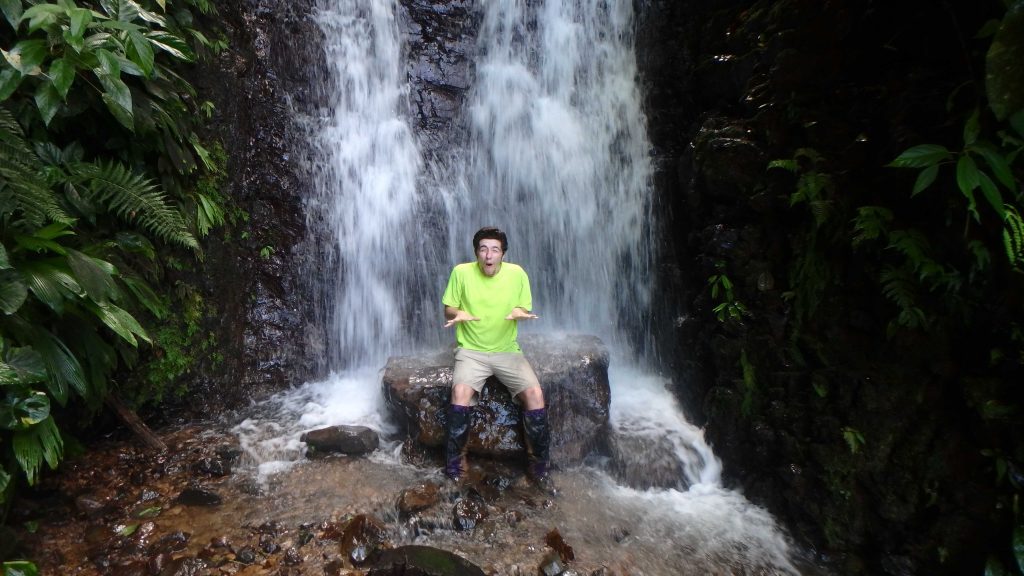
“I didn’t realize that something so difficult could be so fun,” said
Conor R. from San Marcos, California. “I’ve never enjoyed myself while struggling so much.”
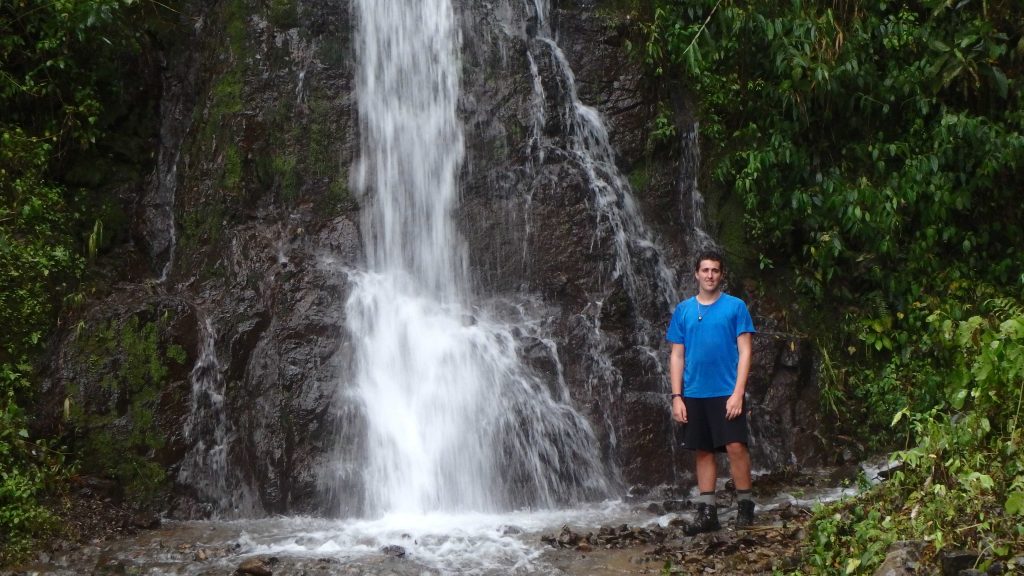
“The hike was super hard, super fun and super beautiful,” said
Jacob S. from Brookline, Massachusetts. “The first day uphill [was the hardest]. I built myself up that I wasn’t going to be able to do it but I made it through. I’m a lot stronger than I think I am.”
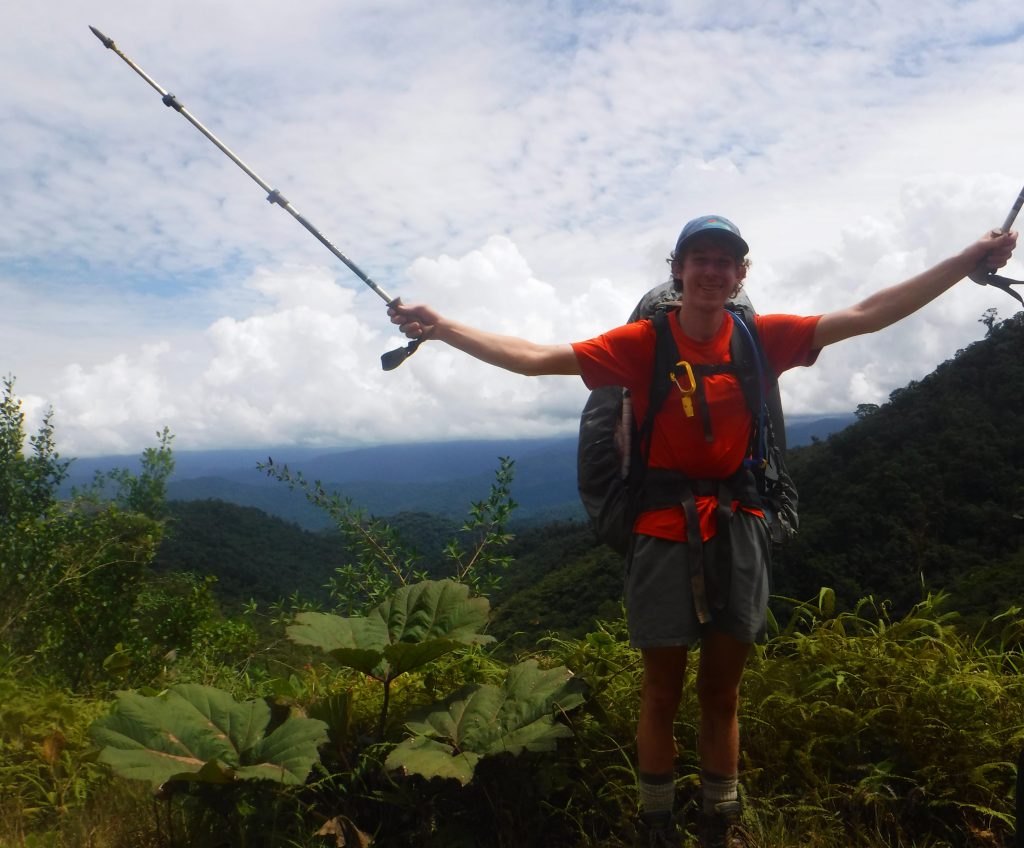
“It was physically challenging but it was also kind of physically comforting, because the whole idea of knowing there is no stopping forces you to find some comfort,” added
Amos P. from Chapel Hill, North Carolina.
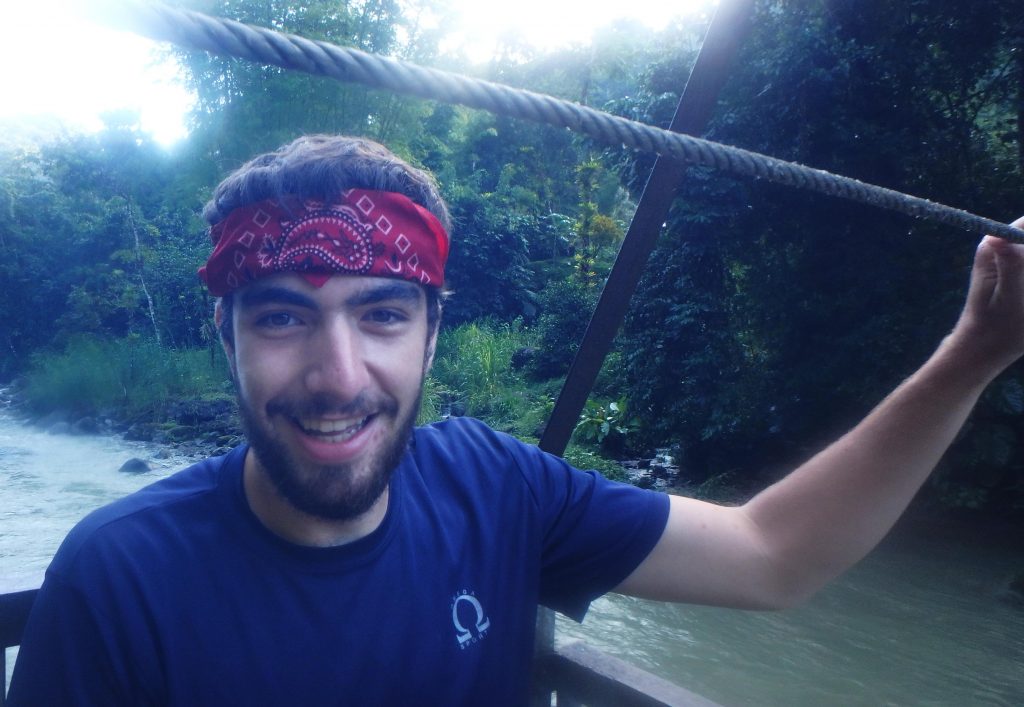
“Around every turn there’s some sort of beauty to look at whether it’s the way people are living or the views or the nature,” he added.
“It was rewarding physically and rewarding mentally,” said
Mac B. from Saskatoon, Canada. “I can definitely go a lot further than I thought I could if I keep pushing myself.”

During their trek, the students climbed
Cerro de la Muerte, the highest point of the Pan-America Highway in Costa Rica. The name means “Mountain of Death” and is one of the most challenging terrains to hike in the country.
‘My favorite thing that we saw was Cerro de la Muerte,” said
Conor. “When we were near the peak, the views overlooking the mountain range and seeing how high we climbed was one of the coolest things of my life.”
“When we climbed the summit I had no energy, but some way I was able to keep pushing all the way to the end,” added
Josh. “That’s a valuable lesson I will use in other areas of my life.”
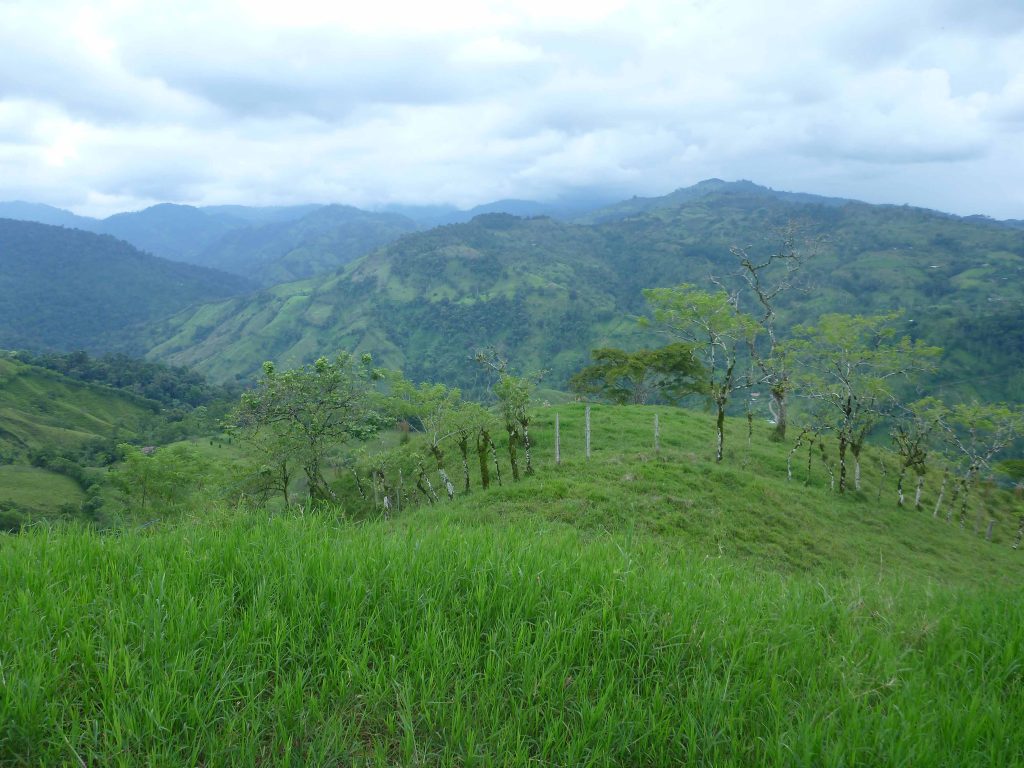
Along the trail, the students camped out under tarps and did homestays with local families. Toward the end of their journey, the students hiked to the
remote village of Piedras Blancas to learn about Costa Rican traditions from the families.
“It was eye-opening because we got to see so much of the culture that most tourists coming to Costa Rica wouldn’t see,” said
Josh. “We got to go to people’s homes and share time with them and learn about their lives. We learned a lot from a lot of different people.”
“The people are a lot more welcoming into their homes than I was expecting,” added
Mac. “Piedras Blancas is away from all the cities and is really pretty. It is peaceful, with the mountain and the river, and all the love of the families who live there that you can feel.”
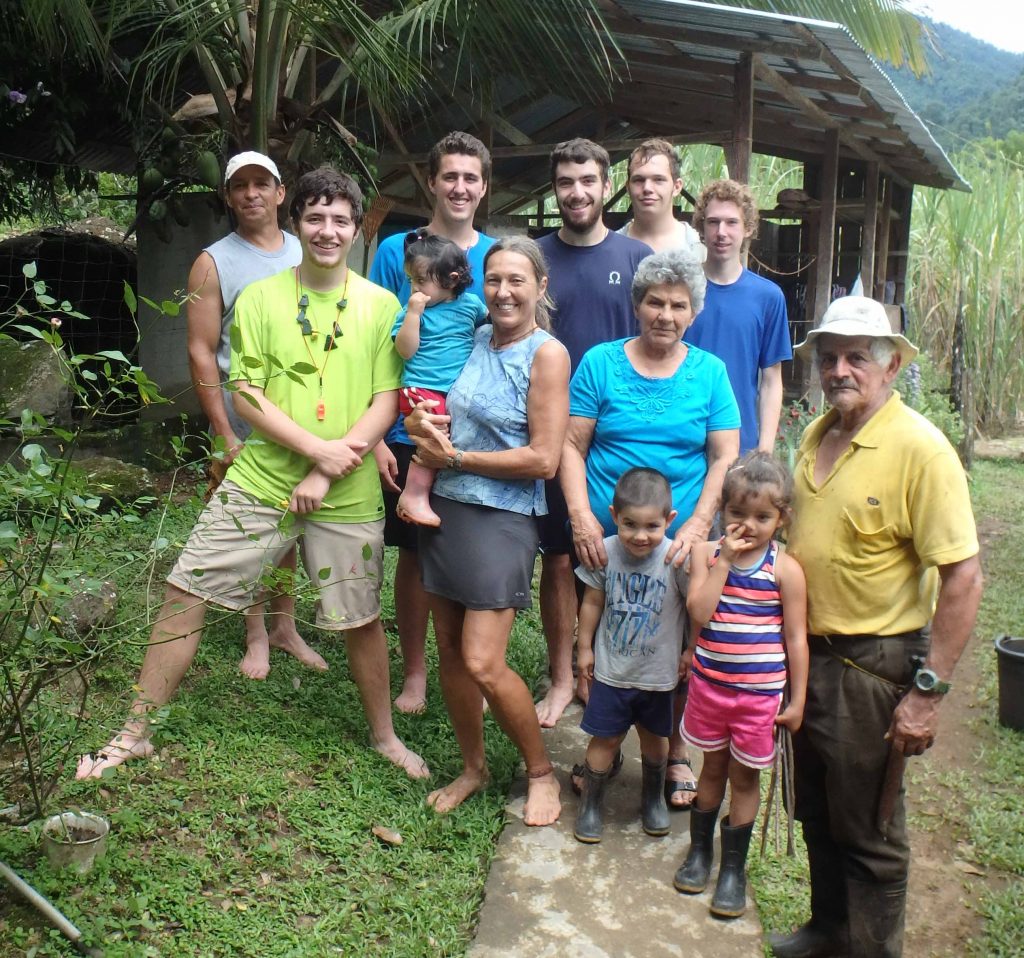 Jacob
Jacob recalled his favorite
homestay in Piedras Blancas at the home of Doña Flor.
“There is a whole family living there,” he said. “They have a bunch of kids and it was fun to watch and play with them. Don Hormidas showed us how to do the trapiche [a traditional farming tool used to extract sugar cane juice] and we made candy and sugar.”
For
Amos, one of the highlights was eating
Costa Rican dishes of gallo pinto, rice, beans and more at the homestays.
“Every time somebody made food for us I would tell them that the food was magnificent because I couldn’t think of a better adjective in Spanish to describe it,” he said.
The students ended their trek by running as a group into the Pacific Ocean near Manuel Antonio National Park.
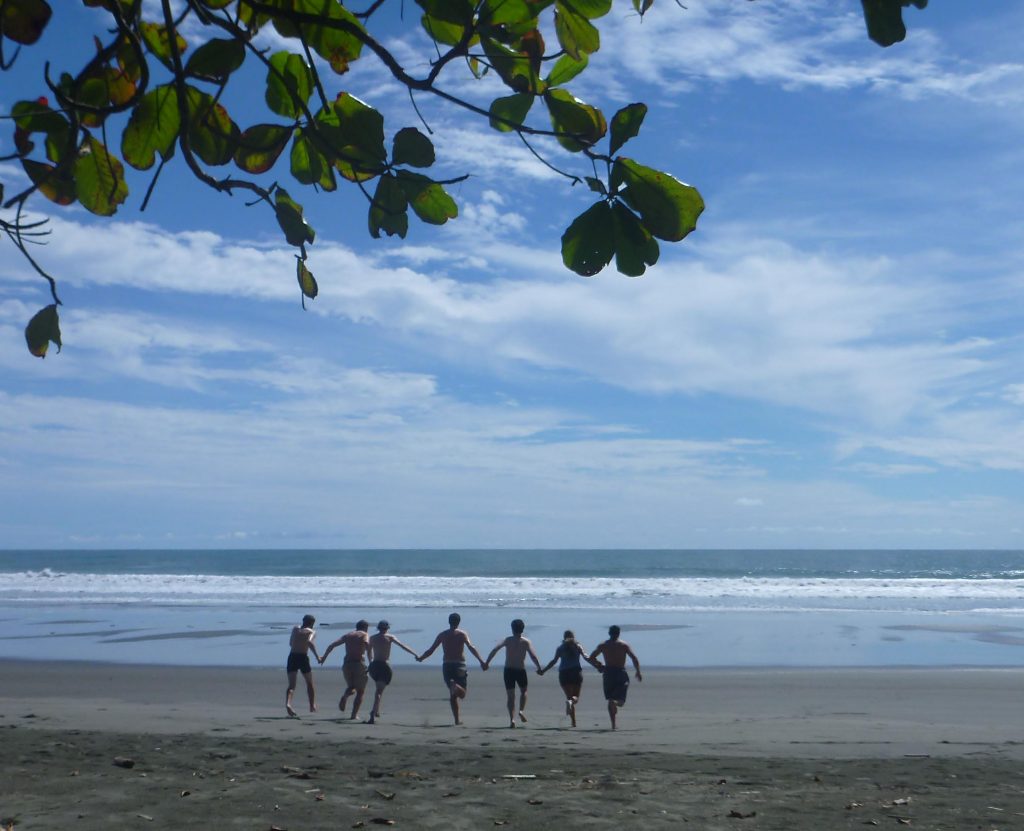
“There are different types of beauty and each place we hiked through had a different type of beauty,” said
Josh. “There was the beauty of the towns and of seeing how little [some of] the people have, but how much they have… and there was the Pacific Ocean and the beauty of finally reaching it and seeing all we had done come to fruition.”
“It gave me a real sense of accomplishment that I haven’t had before,” added
Conor.” At the beginning in your head you are thinking ‘there is no way I can do this.’ But then you do. It was really satisfying and gave me a sense of what I can accomplish if I put my mind to it.”
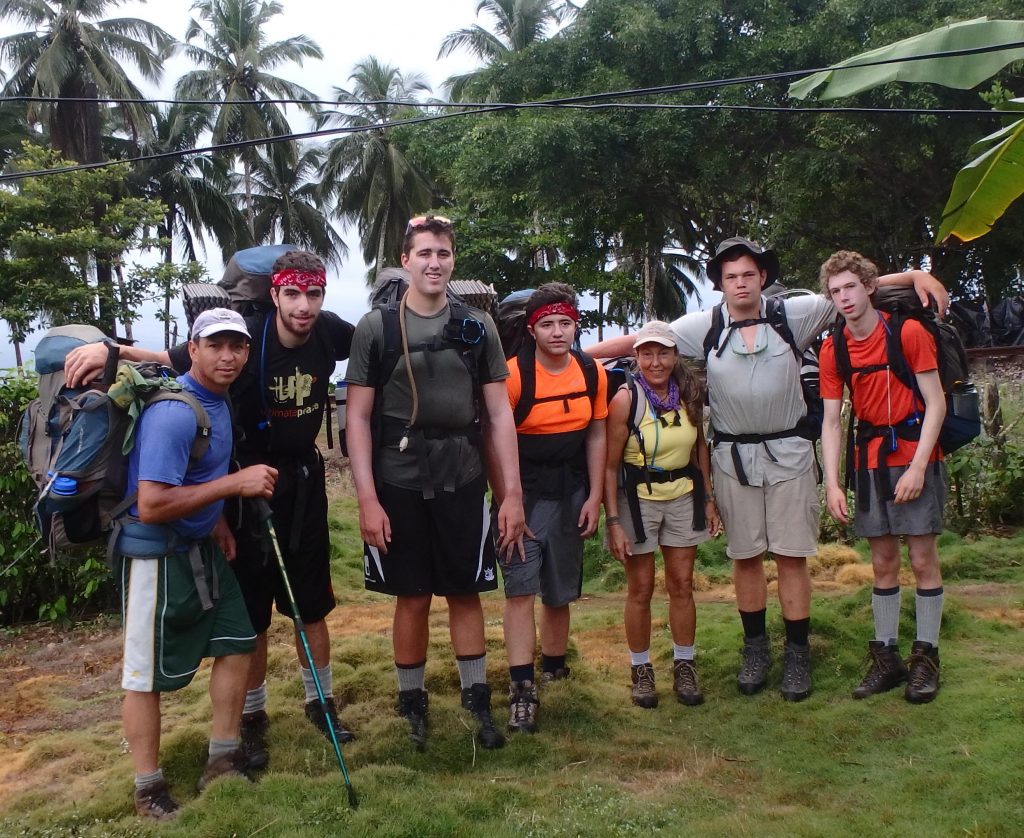 Amos
Amos said the hiking phased opened his “inner eye.”
“More than being open minded and looking out at other people, it’s so important to be open – physically, mentally, emotionally and socially. You can accept other people all you want, but you also have to accept yourself.”
Today the group is exploring the San Jose, Costa Rica’s capital city. Next they will head to Nicaragua where they will give back to local communities with service projects.
Throughout their course, we will be sharing information and photos from our Coast to Coast Expedition Semester students here on our blog and on our Facebook page, so be sure to check back for updates!
 We are excited to share that our Coast to Coast Expedition Semester students recently completed their 26 day hike, trekking across the country of Costa Rica from the Atlantic to Pacific Coast. We are so proud of our students for completing such a physically and mentally challenging feat!
“Obviously it felt long,” said Josh N. from Cambridge, Massachussets. “There were long days and there were short days, but the biggest thing I learned is that I can push through things I didn’t think I could do.”
We are excited to share that our Coast to Coast Expedition Semester students recently completed their 26 day hike, trekking across the country of Costa Rica from the Atlantic to Pacific Coast. We are so proud of our students for completing such a physically and mentally challenging feat!
“Obviously it felt long,” said Josh N. from Cambridge, Massachussets. “There were long days and there were short days, but the biggest thing I learned is that I can push through things I didn’t think I could do.”
 “I didn’t realize that something so difficult could be so fun,” said Conor R. from San Marcos, California. “I’ve never enjoyed myself while struggling so much.”
“I didn’t realize that something so difficult could be so fun,” said Conor R. from San Marcos, California. “I’ve never enjoyed myself while struggling so much.”
 “The hike was super hard, super fun and super beautiful,” said Jacob S. from Brookline, Massachusetts. “The first day uphill [was the hardest]. I built myself up that I wasn’t going to be able to do it but I made it through. I’m a lot stronger than I think I am.”
“The hike was super hard, super fun and super beautiful,” said Jacob S. from Brookline, Massachusetts. “The first day uphill [was the hardest]. I built myself up that I wasn’t going to be able to do it but I made it through. I’m a lot stronger than I think I am.”
 “It was physically challenging but it was also kind of physically comforting, because the whole idea of knowing there is no stopping forces you to find some comfort,” added Amos P. from Chapel Hill, North Carolina.
“It was physically challenging but it was also kind of physically comforting, because the whole idea of knowing there is no stopping forces you to find some comfort,” added Amos P. from Chapel Hill, North Carolina.
 “Around every turn there’s some sort of beauty to look at whether it’s the way people are living or the views or the nature,” he added.
“It was rewarding physically and rewarding mentally,” said Mac B. from Saskatoon, Canada. “I can definitely go a lot further than I thought I could if I keep pushing myself.”
“Around every turn there’s some sort of beauty to look at whether it’s the way people are living or the views or the nature,” he added.
“It was rewarding physically and rewarding mentally,” said Mac B. from Saskatoon, Canada. “I can definitely go a lot further than I thought I could if I keep pushing myself.”
 During their trek, the students climbed Cerro de la Muerte, the highest point of the Pan-America Highway in Costa Rica. The name means “Mountain of Death” and is one of the most challenging terrains to hike in the country.
‘My favorite thing that we saw was Cerro de la Muerte,” said Conor. “When we were near the peak, the views overlooking the mountain range and seeing how high we climbed was one of the coolest things of my life.”
“When we climbed the summit I had no energy, but some way I was able to keep pushing all the way to the end,” added Josh. “That’s a valuable lesson I will use in other areas of my life.”
During their trek, the students climbed Cerro de la Muerte, the highest point of the Pan-America Highway in Costa Rica. The name means “Mountain of Death” and is one of the most challenging terrains to hike in the country.
‘My favorite thing that we saw was Cerro de la Muerte,” said Conor. “When we were near the peak, the views overlooking the mountain range and seeing how high we climbed was one of the coolest things of my life.”
“When we climbed the summit I had no energy, but some way I was able to keep pushing all the way to the end,” added Josh. “That’s a valuable lesson I will use in other areas of my life.”
 Along the trail, the students camped out under tarps and did homestays with local families. Toward the end of their journey, the students hiked to the remote village of Piedras Blancas to learn about Costa Rican traditions from the families.
“It was eye-opening because we got to see so much of the culture that most tourists coming to Costa Rica wouldn’t see,” said Josh. “We got to go to people’s homes and share time with them and learn about their lives. We learned a lot from a lot of different people.”
“The people are a lot more welcoming into their homes than I was expecting,” added Mac. “Piedras Blancas is away from all the cities and is really pretty. It is peaceful, with the mountain and the river, and all the love of the families who live there that you can feel.”
Along the trail, the students camped out under tarps and did homestays with local families. Toward the end of their journey, the students hiked to the remote village of Piedras Blancas to learn about Costa Rican traditions from the families.
“It was eye-opening because we got to see so much of the culture that most tourists coming to Costa Rica wouldn’t see,” said Josh. “We got to go to people’s homes and share time with them and learn about their lives. We learned a lot from a lot of different people.”
“The people are a lot more welcoming into their homes than I was expecting,” added Mac. “Piedras Blancas is away from all the cities and is really pretty. It is peaceful, with the mountain and the river, and all the love of the families who live there that you can feel.”
 Jacob recalled his favorite homestay in Piedras Blancas at the home of Doña Flor.
“There is a whole family living there,” he said. “They have a bunch of kids and it was fun to watch and play with them. Don Hormidas showed us how to do the trapiche [a traditional farming tool used to extract sugar cane juice] and we made candy and sugar.”
For Amos, one of the highlights was eating Costa Rican dishes of gallo pinto, rice, beans and more at the homestays.
“Every time somebody made food for us I would tell them that the food was magnificent because I couldn’t think of a better adjective in Spanish to describe it,” he said.
The students ended their trek by running as a group into the Pacific Ocean near Manuel Antonio National Park.
Jacob recalled his favorite homestay in Piedras Blancas at the home of Doña Flor.
“There is a whole family living there,” he said. “They have a bunch of kids and it was fun to watch and play with them. Don Hormidas showed us how to do the trapiche [a traditional farming tool used to extract sugar cane juice] and we made candy and sugar.”
For Amos, one of the highlights was eating Costa Rican dishes of gallo pinto, rice, beans and more at the homestays.
“Every time somebody made food for us I would tell them that the food was magnificent because I couldn’t think of a better adjective in Spanish to describe it,” he said.
The students ended their trek by running as a group into the Pacific Ocean near Manuel Antonio National Park.
 “There are different types of beauty and each place we hiked through had a different type of beauty,” said Josh. “There was the beauty of the towns and of seeing how little [some of] the people have, but how much they have… and there was the Pacific Ocean and the beauty of finally reaching it and seeing all we had done come to fruition.”
“It gave me a real sense of accomplishment that I haven’t had before,” added Conor.” At the beginning in your head you are thinking ‘there is no way I can do this.’ But then you do. It was really satisfying and gave me a sense of what I can accomplish if I put my mind to it.”
“There are different types of beauty and each place we hiked through had a different type of beauty,” said Josh. “There was the beauty of the towns and of seeing how little [some of] the people have, but how much they have… and there was the Pacific Ocean and the beauty of finally reaching it and seeing all we had done come to fruition.”
“It gave me a real sense of accomplishment that I haven’t had before,” added Conor.” At the beginning in your head you are thinking ‘there is no way I can do this.’ But then you do. It was really satisfying and gave me a sense of what I can accomplish if I put my mind to it.”
 Amos said the hiking phased opened his “inner eye.”
“More than being open minded and looking out at other people, it’s so important to be open – physically, mentally, emotionally and socially. You can accept other people all you want, but you also have to accept yourself.”
Today the group is exploring the San Jose, Costa Rica’s capital city. Next they will head to Nicaragua where they will give back to local communities with service projects.
Throughout their course, we will be sharing information and photos from our Coast to Coast Expedition Semester students here on our blog and on our Facebook page, so be sure to check back for updates!
Amos said the hiking phased opened his “inner eye.”
“More than being open minded and looking out at other people, it’s so important to be open – physically, mentally, emotionally and socially. You can accept other people all you want, but you also have to accept yourself.”
Today the group is exploring the San Jose, Costa Rica’s capital city. Next they will head to Nicaragua where they will give back to local communities with service projects.
Throughout their course, we will be sharing information and photos from our Coast to Coast Expedition Semester students here on our blog and on our Facebook page, so be sure to check back for updates!